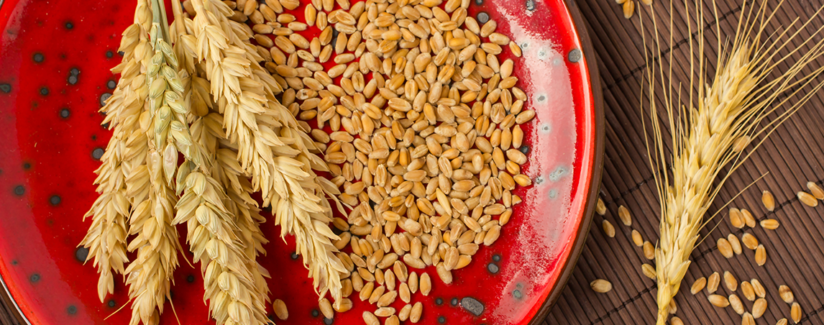
Gluten-Free Wheat May Change Bread
11/02/2017
Wheat has recently made headlines for new gluten-free potential. Sounds impossible since gluten is from wheat, right?
We reached out to Robert Wager, biochemist and member of the Biology Department of Vancouver Island University, and Dr. Steve Taylor, Professor in the Department of Food Science and Technology and Co-founder and Co-Director of the Food Allergy Research and Resource Program, University of Nebraska-Lincoln, to give us further clarification on what gluten-free wheat means.
Wager explained what gluten is. “Gluten is made up of two main types of protein, one of which is gliadin. Gliadin is the protein that causes the most allergic reactions.” The new gluten-free variety is being developed from regular wheat that has been gene-edited to reduce the amount of gliadin.
How do this gliadin protein and gene-editing work? Gene editing, or CRISPR, is a group of technologies that allow genetic material to be added, removed or altered at a particular location in a genome. In this case, scientists go into the wheat’s DNA and edit out a particular amount of gliadin.
“Gluten-free wheat is a 97% reduction in gliadin content. This version of gluten-free wheat is removing about three-quarters of the gliadin genes,” Wager said.
It’s important to note that only 97% of the gliadin is being removed because anyone who is allergic to gluten could still experience a reaction. However, Wager points out, “It could be a great product for them, but that’s yet to be determined.” Everyone’s gluten intolerance is different and therefore their response to the remaining gliadin is unknown.
For those of us not allergic to gluten, we shouldn’t be concerned. Wager says normal bread eaters won’t be affected any differently. Instead you’ll have something resembling a flatbread in appearance and texture.
One thing Wager thought it was important to point out was that within wheat, “there are approximately 45 types of gliadin genes. What physiological effects will occur if we remove all 45 of them is not known. Physiological effects are the plant’s ability to fight off a disease or infection. If they continue to remove or de-activate all the gliadin, there will be a huge unknown impact on the wheat.”
What does this mean for those with celiac disease and gluten intolerance? Dr. Taylor explained there are other types of gluten-free options such as sourdough and heritage wheat.
“Heritage wheat is a term that I have seen used to describe wheat that is safe for celiac sufferers,” says Dr. Taylor. “It means the rather old wheat varieties, now called emmer and einkorn. These old varieties of wheat have less gluten than the regular bread wheat that is most typically used in today’s processed foods, but they still do have gluten.”
Even then, Dr. Taylor cautions that not all those with celiac would be able to tolerate it.
With sourdough, the slow lacto-fermentation process makes the bread (mostly) gluten free. This fermentation process also makes detecting any residual gluten more difficult, which has made the FDA slightly more reluctant to label sourdough as gluten free. Dr. Taylor gives us the example of gluten-free beer and how labeling it as so is somewhat of a risk. “There is evidence that some with celiac disease can tolerate sourdough,” Dr. Taylor says, but people with the disease should be cautious.
Either way, sourdough has a unique flavor and heritage wheat “definitely does not make great bread due to the lower gluten content” Dr. Taylor informs us.
Wager and Dr. Taylor agree that gluten-free wheat and bread probably won’t take over the market. The number of people allergic to gluten is a significantly smaller number compared to the number of people that are not allergic and the proteins with unique functional properties make gluten a rather important ingredient in foods. The experts also agree that while it is unclear when gluten-free wheat will hit markets, when it does, those truly allergic to gluten and suffering from celiac disease should treat it with caution.
“The allergic response to the remaining gliadin (gluten) is unknown and will depend on one’s gluten-intolerance,” Dr. Taylor said. “The biggest risk would be some people might be duped into believing that products are gluten free when they’re not.”
The FDA regulates the labeling of gluten-free products. He said labeling is a complex process. “In my view, FDA would be reluctant to grant permission to use gluten-free wheat on products made from heritage wheat or from sourdough-fermented products because FDA has not yet promulgated a final rule for use of gluten-free on fermented products,” he said. “That leaves genetically-engineered wheat. This form of gluten-free wheat might be okayed by FDA to be labeled as gluten-free.”
So is new gluten-free wheat a gamechanger? Wager says that he “would not consider this a possible game changer, ” but he does believe that it could be the start of gene-editing products that could directly benefit us as consumers. Dr. Taylor considers this gene-edited wheat to be a potential game-changer, but that consumers may consider it a GMO, which might affect its acceptance.
Gluten-free wheat created through gene editing will not be on the market for some time, but it has endless market possibilities. The wheat may provide some benefit for those who are gluten intolerant or gluten sensitive. Maybe one day we’ll say, “I remember gluten bread.”



























